Retro Review: Chevrolet Corvair
This look at the Chevrolet Corvair offers some highlights of a classic car that was dramatically different with its rear-mounted, air-cooled engine.
An Oddity in American Automotive History
The Chevrolet Corvair, produced from 1960 through 1969, remains the only mass-produced, American designed passenger car with an air-cooled engine mounted in the rear. Close to two million were produced in that span and though they received bad press toward the end, in the beginning, the Corvair sold like hot cakes.
Introducing the Chevrolet Corvair
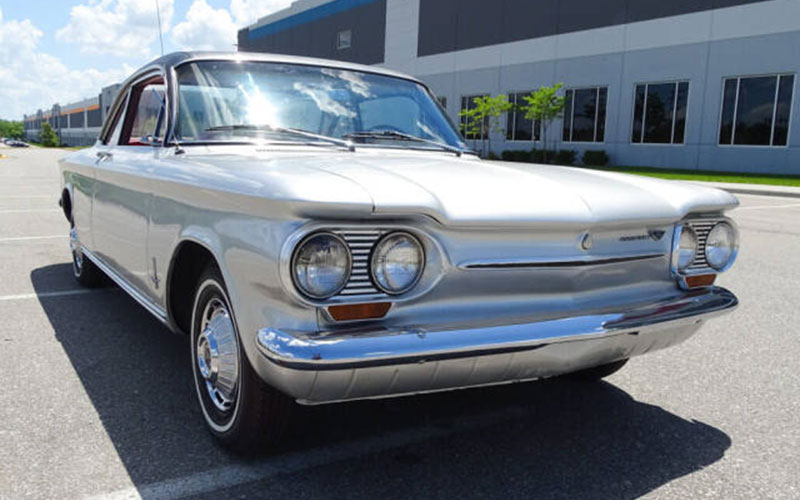
1963 Chevrolet Corvair – carsforsale.com | Shop Chevrolet Corvair on Carsforsale.com
American automakers in the late 50s were having such success with huge sedans that the small car market was effectively abandoned. Eventually however, an uptick in sales of vehicles like the Nash Rambler and European imports from the likes of Volkswagen illustrated a consumer appetite for compacts. While Ford and Chrysler re-entered this segment with 20% scaled-down versions of their standard line, Chevrolet went in a completely different direction.
The Corvair name, a mashup of Corvette and Bel-Air, first appeared on a Corvette-based concept car during the 1954 Motorama traveling exhibition. When it was greenlit for production however, the Corvair broke period vehicle norms in dramatic fashion. The motor had a horizontally opposed 6-cylinder configuration, was air-cooled, and featured aluminum construction for major components. As well, the engine was mounted in the rear, a monocoque body was used in place of body-on-frame construction, and there was a notable lack of tail fins or a huge chrome grille.
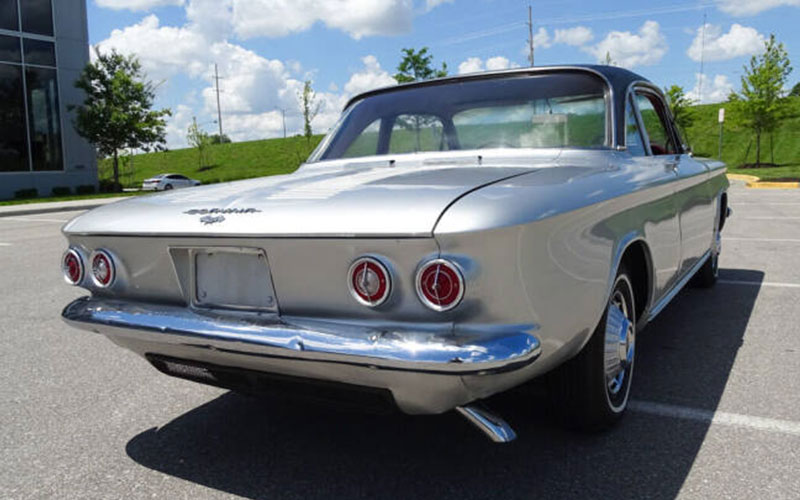
Ed Cole, General Manager of Chevy in 1956 and regarded as the “father” of the legendary Chevy small-block V8, was a main proponent in developing the Chevrolet Corvair, which was a groundbreaking vehicle in its time. And he nailed it. Time magazine featured Mr. Cole with a Corvair on their cover in 1960 and it was named the 1960 Car of the Year. Chevrolet touted the flat passenger floor and rear end braking balance with consumers eating it up to the tune of 26,000 Corvairs sold in the first two days on the market. It would go on to sell over 200,000 every year for the first six model years.
The First-Generation Chevrolet Corvair
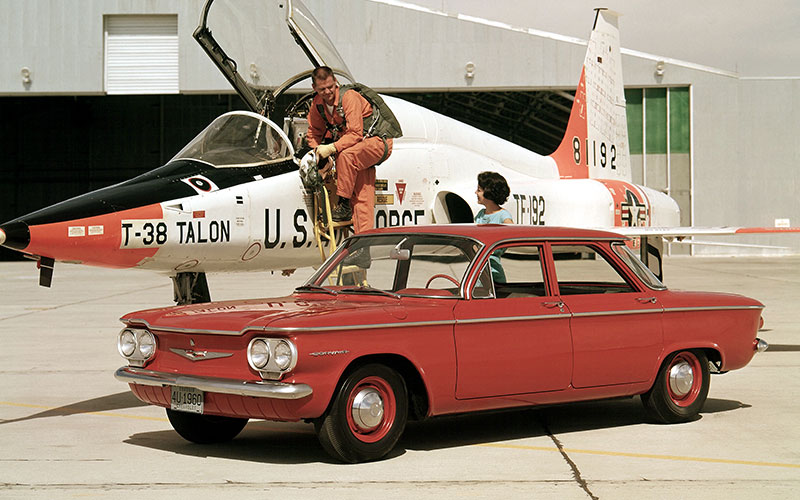
Generation one of the Corvair kicked off with the 1960 model offered as a four-door sedan. Initially positioned as an economy car, the 2.3-liter “Turbo Air” flat-6 motor made 80 horsepower paired with a 3-speed manual or optional 2-speed automatic. Four-corner independent suspension, which used a swing-axle rear setup, was marketed as “Quadri-Flex” while the “Unipack Power Team” denoted the unusual single-unit setup of engine, transmission and rear axle. A two-door coupe body was introduced later that year as well as an optional “Super Turbo Air” engine sporting a hotter cam and 95 horsepower.
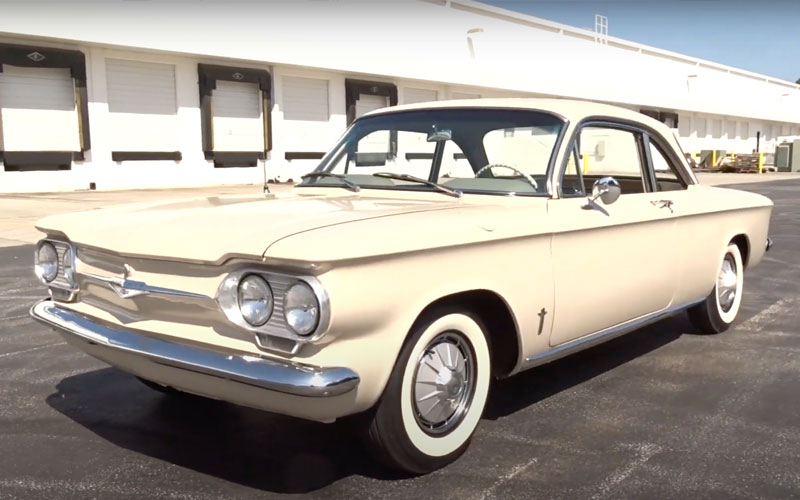
The following year, Chevrolet introduced the Monza trim and realized they missed the mark pitching the Corvair as an econobox. Consumers wanted some spice and the General delivered. Monzas brought a new 4-speed manual with full synchromesh, “DeLuxe” bucket seats and upscale trim, earning it the “Poor Man’s Porsche” moniker. A beefier, 2.4-liter motor was added to the mix making 98 hp, air conditioning was made available, and a host of new body styles arrived.
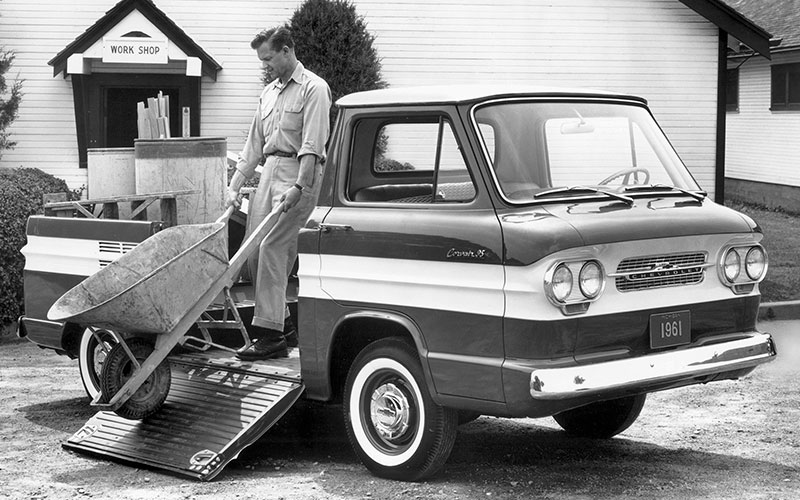
Lakewood was the name given to a new station wagon and a lineup of light-duty trucks and vans were introduced as the Corvair 95 series. They featured a “cab over” design, which sits the driver over the front wheels. The pickups were offered in Loadside or Rampside cargo configuration. The Loadside offered cargo box access from the tailgate, like a traditional truck, while the Rampside had a unique, fold-down ramp along the side for easy access. A Greenbrier Sportswagon also joined the mix featuring the “Corvan” panel van body but with windows plus passenger car trim and paint schemes.
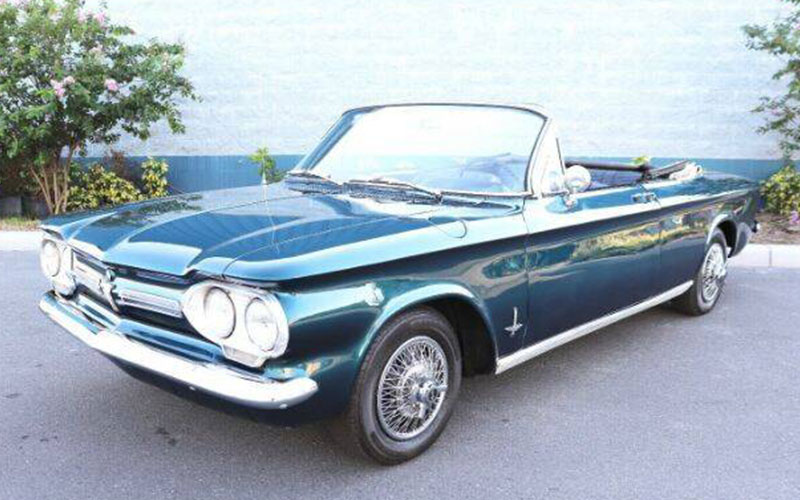
1962 brought the first convertible Chevrolet Corvair and a turbocharged Spyder option. Available on Monza coupes and ragtops, the Spyder equipment included a 150-horse, turbo-6, gauges for cylinder head temperature and intake manifold pressure, along with special fender script. Also new in ’62 was an optional heavy-duty suspension package that added a front anti-roll bar, rear axle-limit straps, and recalibrated dampers for major handling improvements. The Loadside Corvan, only produced for two model years, was discontinued, as was the station wagon variant.
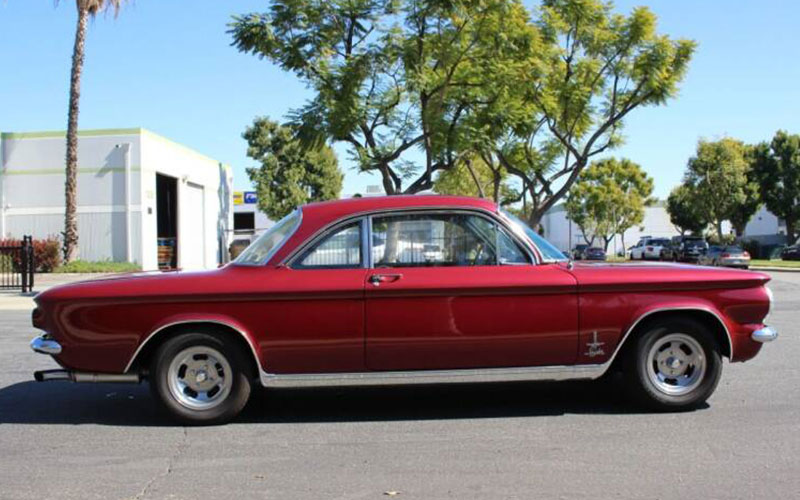
Model year 1963 Chevrolet Corvairs were largely carryover vehicles aside form new, self-adjusting brakes and optional transmission gearing aimed at fuel efficiency. 1964 was the final year for the first-gen Corvair and featured largely a largely similar lineup from the prior year. However, engine displacement got a bump from 2.4 to 2.7 liters of displacement, nudging base motors to 95 hp and the high-performance option to 110. A revised rear suspension featured a transverse leaf spring to foster more neutral handling and this year saw the Rampside discontinued, ending the line of Corvair-based pickups.
The Next Chevrolet Corvair
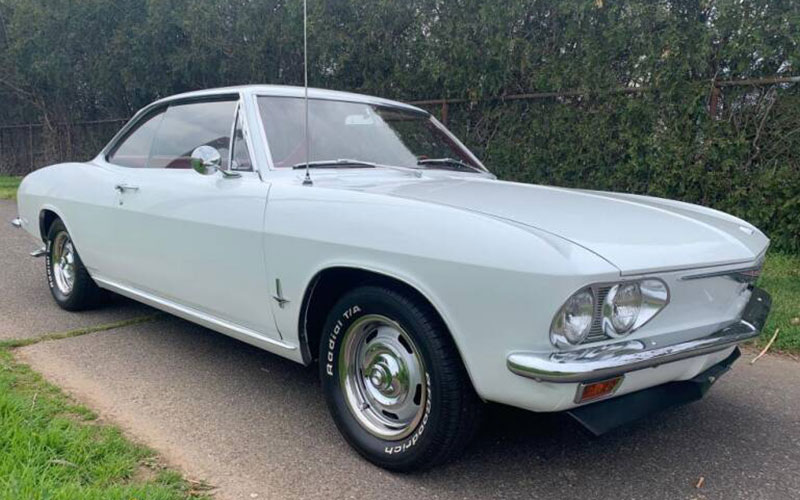
Second generation Corvairs appeared with the 1965 model, sporting a notably revised rear suspension. The swing-axle setup caused handling headaches and as such, was replaced with a trailing arm configuration. This was also the first time the pillarless hardtop – a popular body style at the time – Corvair was sold, becoming the only pillarless, four-door hardtop compact car ever available in the US. The 2.7-liter sized engines carried over into 1965 and a new Corsa trim arrived.
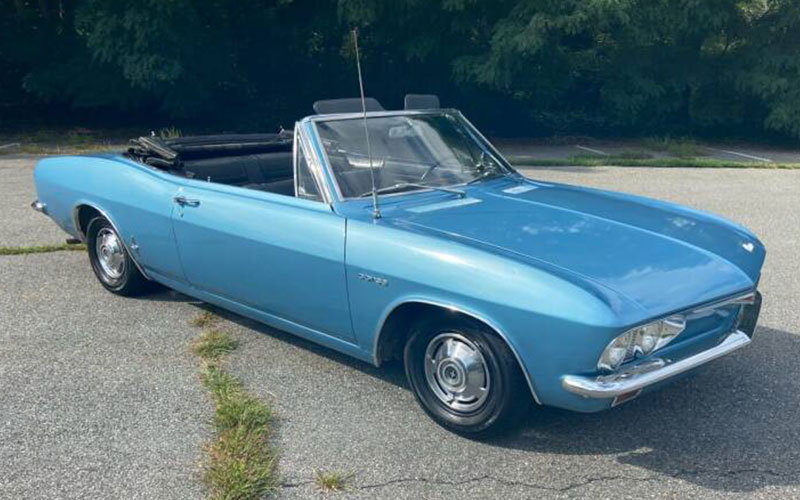
Corsa Corvairs came standard with a naturally aspirated, 140-horse engine or an optional, turbocharged version cranking out 180 hp. They also sported a 140-mph speedometer, 6,000-rpm tachometer, and fuel gauge. Across the ’65 Corvair line, improvements were on tap like larger brakes from the Chevelle, a stronger differential ring gear, and chassis reinforcements. An optional Special Purpose Chassis Equipment package offered a tuned suspension and quick ratio steering box.
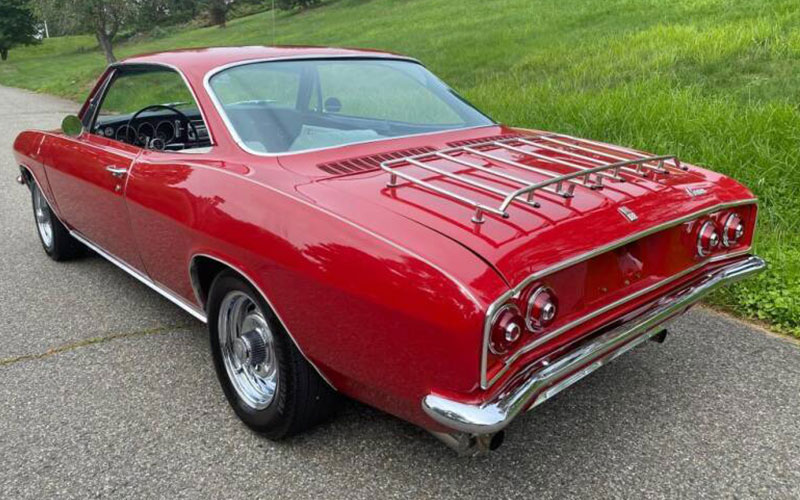
In 1966, the Chevrolet Corvair saw minimal engineering and design updates, but did start to experience a sales decline due to two main factors. For one, Ford had unleashed the 270-horse, V8 powered Mustang which in turn got the rumor mill turning about a Chevy competitor – that would indirectly impact Corvair sales – to be called the Camaro. The other was Ralph Nader’s infamous book Unsafe at Any Speed published the year before. It vilified the Corvair’s swing-axle suspension and left a permanent blemish on the vehicle’s reputation.
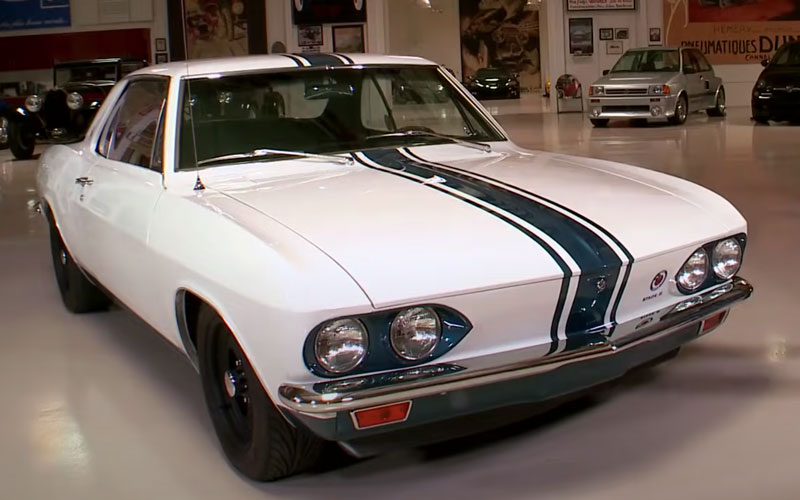
A bright spot in 1966 was the ultra-limited Yenko Stinger Corvair. Famed Chevy racer Don Yenko needed to build 100 road homologation Corvairs in order to race them in SCCA events. The vehicles he cooked up varied widely with some sporting a fiberglass engine cover and engine upgrades to the tune of 190, 220, and even 240 horsepower. They came fitted with the factory heavy-duty suspension, quicker steering ratio, “Positraction” limited-slip differential, and more. Today, they are very rare and extremely collectible.
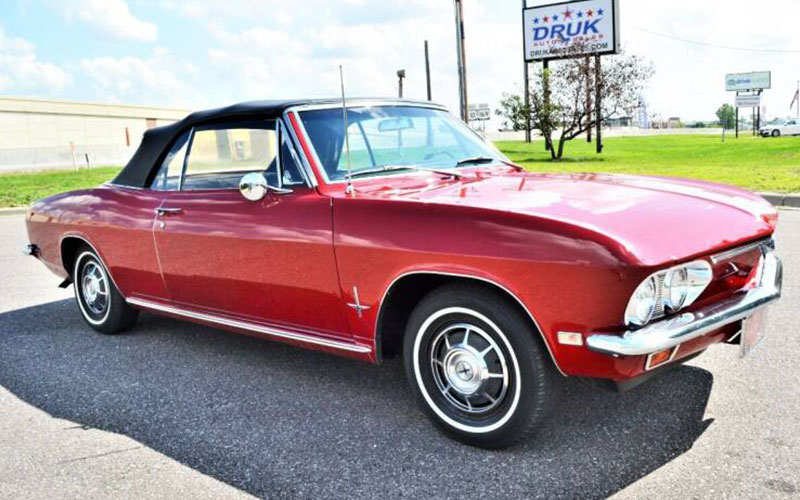
Chevy ultimately decided to discontinue Corvair development in 1966, so by 1967 the lineup was down to just a coupe, sedan, or convertible. Even though a fully collapsible steering column, new 50,000-mile engine warranty, and stronger brake hoses were added, the Corvair’s production volume dropped from over 100,000 in 1966 to just 27,253 in 1967. The four-door hardtop was gone by 1968, optional equipment was deleted, and all advertising stopped leading to sales of only 15,400 units.
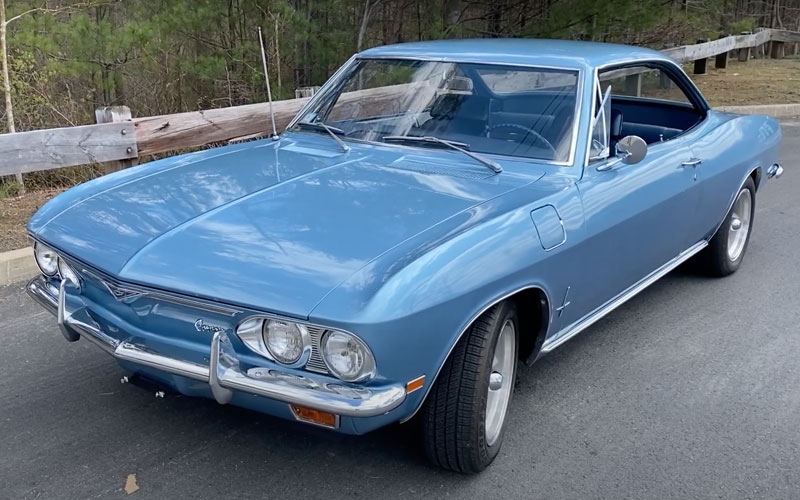
In its final model year, 1969, the Corvair was built in the same factory as the Chevrolet Nova. However, Nova demand was so much higher that Corvair assembly was moved to an off-line section of the plant known as “Corvair Room”. The dedicated team in this room effectively hand-built the final Corvairs between November 1968 and May 1969. 6,000 units were built that year, including 521 Monza convertibles.
An Achievement Shrouded in Infamy
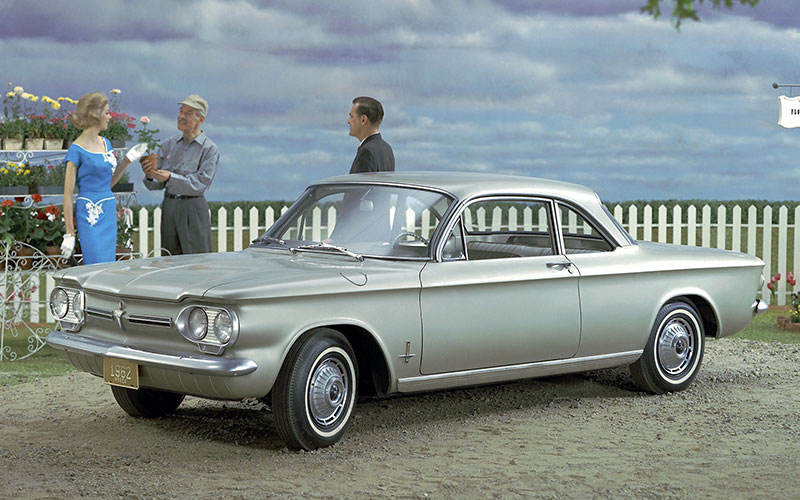
1962 Chevrolet Corvair – media.chevrolet.com | Shop Chevrolet Corvair on Carsforsale.com
The Chevrolet Corvair was a major engineering and performance achievement in 1960’s America. Unfortunately, the original swing-axle rear suspension left a legacy of the car being prone to “tuck under” at the limit, which is extremely dangerous. Ralph Nader permanently highlighted this issue during Congressional hearings, saying the Corvair is “the leading candidate for the un-safest car title.” Ultimately, these accusations were proven false by NHTSA in 1972, but the damage was done.
Regardless, another possibly more imminent threat to long-term Chevrolet Corvair success was the Ford Mustang introduction in 1965. Its phenomenal success got Chevy thinking about a potential competitor, and the Corvair was not it. Its unique engineering was simultaneously the Corvair’s selling point and downfall, as it was expensive to produce and hard to evolve within GM’s standard lines of manufacturing, in the fashion of the Corvette. And so, the Corvair did not make it past 1969, but its legacy lives on as an impressive marvel of 1960’s automotive design and engineering.


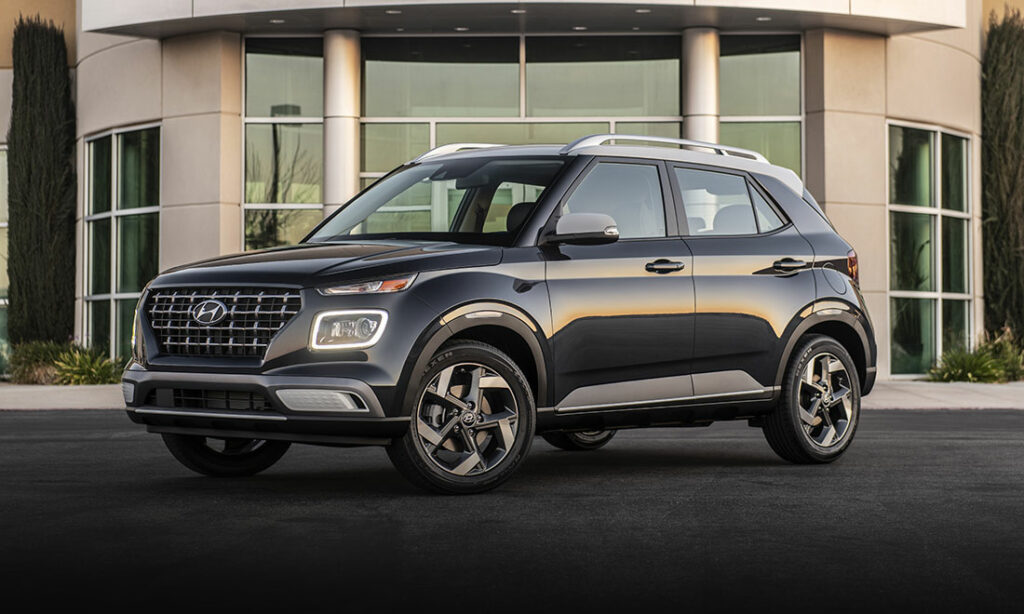
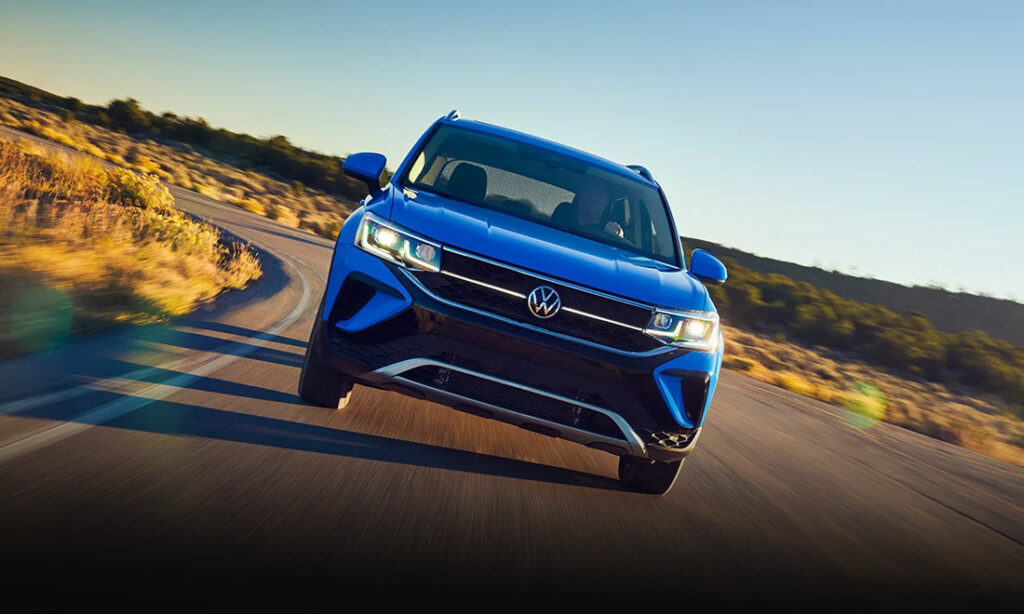
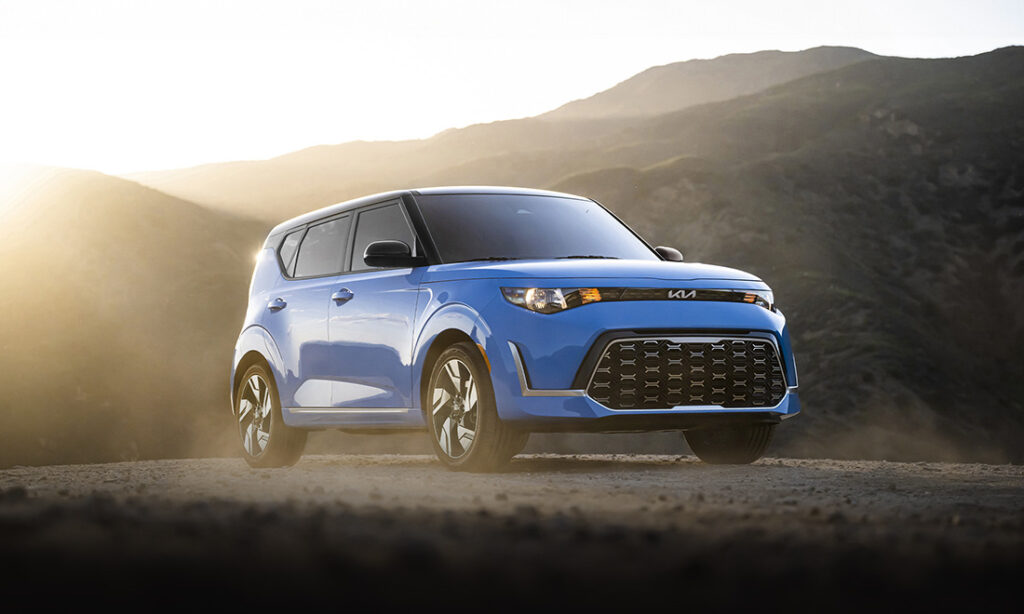
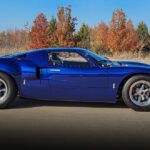









My Dad had a 1962 Monza 4 door with 4 speed manual. It was one of the two cars
I learned to drive in. I would love to have it back.
Thanks for sharing!
Took my driving test in a 61 2 Dr Automatic. NO blind spots could see all 4 corners. Easy to maneuver. Next was a 62 Monza 4 spd. and always carried a spare fan belt.
Thanks for sharing!
My first car was a 1965 Corvair Monza Coupe with the 110hp engine, 4 speed stick, Pozi transaxle, 3.55 gear ratio. I put almost 80000 miles on it. I have owned every model of the line with exception of the Lakewood wagon. My most favorite was my first and the 2 1966 Corsa (140 and 180). I really miss them.
Had a 1965 Monza 4 Door, 140 horse with 4 1 bbl carbs. Loved that car.
Had a 64 Monza convertible with 4 speed in college. 1964s still had the swing axle -but with an anti sway camber bar in back. Such a wonderful car!
Built a dune buggy from a VW floor pan and installed the complete corvair rear assembly (wishbone assemly) using the 102 HP 144.5 cubic inch engine. Fun car